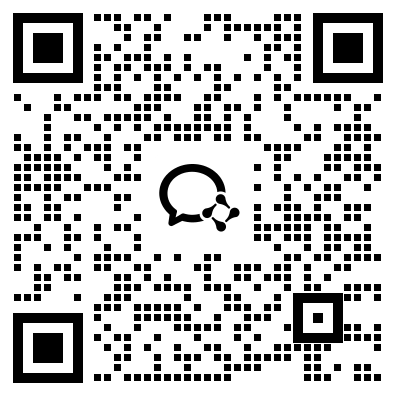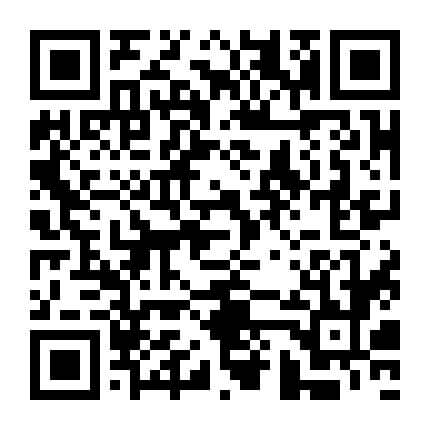考研201英语(一)在线题库每日一练(五十五)
摘要:以下是希赛网给大家分享考研201英语(一)在线题库每日一练,希望通过刷题可以帮助大家巩固重要知识点,对知识点查漏补缺,祝愿大家能顺利通过考试!
本文提供考研201英语(一)在线题库每日一练,以下为具体内容
1、In 1924 America's National Research Council sent two engineers to supervise a series of industrial experiments at a large telephone-parts factory called the Hawthorne Plant near Chicago. It hoped they would learn how stop-floor lighting (1)workers' productivity. Instead, the studies ended (2) giving their name to the "Hawthorne effect", the extremely influential idea that the very (3) to being experimented upon changed subjects' behavior. The idea arose because of the behavior of the women in the (4) Hawthorne plant. According to (5) of the experiments, their hourly output rose when lighting was increased, but also when it was dimmed. It did not (6) what was done in the experiment; (7)something was changed, productivity rose. A(n) (8) that they were being experimented upon seemed to be (9) to alter workers' behavior (10) itself. After several decades, the same data were (11) to econometric the analysis. Hawthorne experiments has another surprise in store (12) the descriptions on record, no systematic (13) was found that levels of productivity were related to changes in lighting. It turns out that peculiar way of conducting the experiments may have led to (14) interpretation of what happened. (15), lighting was always changed on a Sunday. When work started again on Monday, output (16) rose compared with the previous Saturday and (17) to rise for the next couple of days. (18), a comparison with data for weeks when there was no experimentation showed that output always went up on Monday, workers (19) to be diligent for the first few days of the week in any case, before (20) a plateau and then slackening off. This suggests that the alleged "Hawthorne effect" is hard to pin down.
问题1
A、affected
B、achieved
C、extracted
D、restored
问题2
A、at
B、up
C、with
D、off
问题3
A、truth
B、sight
C、act
D、proof
问题4
A、controversial
B、perplexing
C、mischievous
D、ambiguous
问题5
A、requirements
B、explanations
C、accounts
D、assessments
问题6
A、conclude
B、matter
C、indicate
D、work
问题7
A、as far as
B、for fear that
C、in case that
D、so long as
问题8
A、awareness
B、expectation
C、sentiment
D、illusion
问题9
A、suitable
B、excessive
C、enough
D、abundant
问题10
A、about
B、for
C、on
D、by
问题11
A、compared
B、shown
C、subjected
D、conveyed
问题12
A、contrary to
B、consistent with
C、parallel with
D、peculiar to
问题13
A、evidence
B、guidance
C、implication
D、source
问题14
A、disputable
B、enlightening
C、reliable
D、misleading
问题15
A、In contrast
B、For example
C、In consequence
D、As usual
问题16
A、duly
B、accidentally
C、unpredictably
D、suddenly
问题17
A、failed
B、ceased
C、started
D、continued
问题18
A、Therefore
B、Furthermore
C、However
D、Meanwhile
问题19
A、attempted
B、tended
C、chose
D、intended
问题20
A、breaking
B、climbing
C、surpassing
D、hitting
2、It's no surprise that Jennifer Senior's insightful, provocative magazine cover story, “I love My Children, I Hate My Life,” is arousing much chatter—nothing gets people talking like the suggestion that child rearing is anything less than a completely fulfilling, life-enriching experience. Rather than concluding that children make parents either happy or miserable, Senior suggests we need to redefine happiness: instead of thinking of it as something that can be measured by moment-to-moment joy, we should consider being happy as a past-tense condition. Even though the day-to-day experience of raising kids can be soul-crushingly hard, Senior writes that “the very things that in the moment dampen our moods can later be sources of intense gratification and delight.” The magazine cover showing an attractive mother holding a cute baby is hardly the only Madonna-and-child image on newsstands this week. There are also stories about newly adoptive—and newly single—mom Sandra Bullock, as well as the usual “Jennifer Aniston is pregnant” news. Practically every week features at least one celebrity mom, or mom-to-be, smiling on the newsstands. In a society that so persistently celebrates procreation, is it any wonder that admitting you regret having children is equivalent to admitting you support kitten-killing? It doesn't seem quite fair, then, to compare the regrets of parents to the regrets of the children. Unhappy parents rarely are provoked to wonder if they shouldn't have had kids, but unhappy childless folks are bothered with the message that children are the single most important thing in the world: obviously their misery must be a direct result of the gaping baby-size holes in their lives. Of course, the image of parenthood that celebrity magazines like Us Weekly and People present is hugely unrealistic, especially when the parents are single mothers like Bullock. According to several studies concluding that parents are less happy than childless couples, single parents are the least happy of all. No shock there, considering how much work it is to raise a kid without a partner to lean on; yet to hear Sandra and Britney tell it, raising a kid on their “own” (read: with round-the-clock help) is a piece of cake. It's hard to imagine that many people are dumb enough to want children just because Reese and Angelina make it look so glamorous: most adults understand that a baby is not a haircut. But it's interesting to wonder if the images we see every week of stress-free, happiness-enhancing parenthood aren't in some small, subconscious way contributing to our own dissatisfactions with the actual experience, in the same way that a small part of us hoped getting “the Rachel” might make us look just a little bit like Jennifer Aniston. 1.Jennifer Senior suggests in her article that raising a child can bring ( ). 2.We learn from Paragraph 2 that( ).3.It is suggested in Paragraph 3 that childless folks ( ). 4.According to Paragraph 4, the message conveyed by celebrity magazines is ( ). 5.Which of the following can be inferred from the last paragraph?
问题1
A、temporary delight
B、enjoyment in progress
C、happiness in retrospect
D、lasting reward
问题2
A、celebrity moms are a permanent source for gossip
B、single mothers with babies deserve greater attention
C、news about pregnant celebrities is entertaining
D、having children is highly valued by the public
问题3
A、are constantly exposed to criticism
B、are largely ignored by the media
C、fail to fulfill their social responsibilities
D、are less likely to be satisfied with their life
问题4
A、soothing
B、ambiguous
C、compensatory
D、misleading
问题5
A、Having children contributes little to the glamour of celebrity moms.
B、Celebrity moms have influenced our attitude towards child rearing.
C、Having children intensifies our dissatisfaction with life.
D、We sometimes neglect the happiness from child rearing.
3、Come on—Everybody's doing it. That whispered message, half invitation and half forcing, is what most of us think of when we hear the words peer pressure. It usually leads to no good—drinking, drugs and casual sex. But in her new book Join the Club, Tina Rosenberg contends that peer pressure can also be a positive force through what she calls the social cure, in which organizations and officials use the power of group dynamics to help individuals improve their lives and possibly the word. Rosenberg, the recipient of a Pulitzer Prize, offers a host of example of the social cure in action: In South Carolina, a state-sponsored antismoking program called Rage Against the Haze sets out to make cigarettes uncool. In South Africa, an HIV-prevention initiative known as LoveLife recruits young people to promote safe sex among their peers. The idea seems promising, and Rosenberg is a perceptive observer. Her critique of the lameness of many pubic-health campaigns is spot-on: they fail to mobilize peer pressure for healthy habits, and they demonstrate a seriously flawed understanding of psychology. "Dare to be different, please don't smoke!” pleads one billboard campaign aimed at reducing smoking among teenagers-teenagers, who desire nothing more than fitting in. Rosenberg argues convincingly that public-health advocates ought to take a page from advertisers, so skilled at applying peer pressure. But on the general effectiveness of the social cure, Rosenberg is less persuasive. Join the Club is filled with too much irrelevant detail and not enough exploration of the social and biological factors that make peer pressure so powerful. The most glaring flaw of the social cure as it's presented here is that it doesn't work very well for very long. Rage Against the Haze failed once state funding was cut. Evidence that the LoveLife program produces lasting changes is limited and mixed. There's no doubt that our peer groups exert enormous influence on our behavior. An emerging body of research shows that positive health habits—as well as negative ones—spread through networks of friends via social communication. This is a subtle form of peer pressure: we unconsciously imitate the behavior we see every day. Far less certain, however, is how successfully experts and bureaucrats can select our peer groups and steer their activities in virtuous directions. It's like the teacher who breaks up the troublemakers in the back row by pairing them with better-behaved classmates. The tactic never really works. And that's the problem with a social cure engineered from the outside: in the real world, as in school, we insist on choosing our own friends. 1.According to the first paragraph, peer pressure often emerges as( ).2.Rosenberg holds that public advocates should ( ). 3.In the author's view, Rosenberg's book fails to ( ). 4.Paragraph 5 shows that our imitation of behaviors ( ). 5.The author suggests in the last paragraph that the effect of peer pressure is( ).
问题1
A、a supplement to the social cure
B、a stimulus to group dynamics
C、an obstacle to school progress
D、a cause of undesirable behaviors
问题2
A、recruit professional advertisers
B、learn from advertisers' experience
C、stay away from commercial advertisers
D、recognize the limitations of advertisements
问题3
A、adequately probe social and biological factors
B、effectively evade the flaws of the social cure
C、illustrate the functions of state funding
D、produce a long-lasting social effect
问题4
A、is harmful to our networks of friends
B、will mislead behavioral studies
C、occurs without our realizing it
D、can produce negative health habits
问题5
A、harmful
B、desirable
C、profound
D、questionable
4、In the idealized version of how science is done, facts about the world are waiting to be observed and collected by objective researchers who use the scientific method to carry out their work. But in the everyday practice of science, discovery frequently follows an ambiguous and complicated route. We aim to be objective, but we cannot escape the context of our unique life experience. Prior knowledge and interest influence what we experience, what we think our experiences mean, and the subsequent actions we take. Opportunities for misinterpretation, error, and self-deception abound. Consequently, discovery claims should be thought of as protoscience. Similar to newly staked mining claims, they are full of potential. But it takes collective scrutiny and acceptance to transform a discovery claim into a mature discovery. This is the credibility process, through which the individual researcher's me, here, now becomes the community's anyone, anywhere, anytime. Objective knowledge is the goal, not the starting point. Once a discovery claim becomes public, the discoverer receives intellectual credit. But, unlike with mining claims, the community takes control of what happens next. Within the complex social structure of the scientific community, researchers make discoveries; editors and reviewers act as gatekeepers by controlling the publication process; other scientists use the new finding to suit their own purposes; and finally, the public (including other scientists) receives the new discovery and possibly accompanying technology. As a discovery claim works it through the community, the interaction and confrontation between shared and competing beliefs about the science and the technology involved transforms an individual's discovery claim into the community's credible discovery. Two paradoxes exist throughout this credibility process. First, scientific work tends to focus on some aspect of prevailing Knowledge that is viewed as incomplete or incorrect. Little reward accompanies duplication and confirmation of what is already known and believed. The goal is new-search, not re-search. Not surprisingly, newly published discovery claims and credible discoveries that appear to be important and convincing will always be open to challenge and potential modification or refutation by future researchers. Second, novelty itself frequently provokes disbelief. Nobel Laureate and physiologist Albert Azent-Gyorgyi once described discovery as “seeing what everybody has seen and thinking what nobody has thought.” But thinking what nobody else has thought and telling others what they have missed may not change their views. Sometimes years are required for truly novel discovery claims to be accepted and appreciated. In the end, credibility “happens” to a discovery claim—a process that corresponds to what philosopher Annette Baier has described as the commons of the mind. “We reason together, challenge, revise, and complete each other's reasoning and each other's conceptions of reason.” 1.According to the first paragraph, the process of discovery is characterized by its( ).2.It can be inferred from Paragraph 2 that credibility process requires ( ). 3.Paragraph 3 shows that a discovery claim becomes credible after it ( ). 4.Albert Szent-Gyorgyi would most likely agree that ( ). 5.Which of the following would be the best title of the test?
问题1
A、uncertainty and complexity
B、misconception and deceptiveness
C、logicality and objectivity
D、systematicness and regularity
问题2
A、strict inspection
B、shared efforts
C、individual wisdom
D、persistent innovation
问题3
A、has attracted the attention of the general public
B、has been examined by the scientific community
C、has received recognition from editors and reviewers
D、has been frequently quoted by peer scientists
问题4
A、scientific claims will survive challenges
B、discoveries today inspire future research
C、efforts to make discoveries are justified
D、scientific work calls for a critical mind
问题5
A、Novelty as an Engine of Scientific Development.
B、Collective Scrutiny in Scientific Discovery.
C、Evolution of Credibility in Doing Science.
D、Challenge to Credibility at the Gate to Science.
5、Up until a few decades ago, our visions of the future were largely — though by no means uniformly — glowingly positive. Science and technology would cure all the ills of humanity, leading to lives of fulfillment and opportunity for all.Now utopia has grown unfashionable, as we have gained a deeper appreciation of the range of threats facing us, from asteroid strike to epidemic flu to climate change. You might even be tempted to assume that humanity has little future to look forward to.But such gloominess is misplaced. The fossil record shows that many species have endured for millions of years — so why shouldn't we? Take a broader look at our species' place in the universe, and it becomes clear that we have an excellent chance of surviving for tens, if not hundreds, of thousands of years. Look up Homo sapiens in the “Red List” of threatened species of the International Union for the Conversation of Nature (IUCN), and you will read: “Listed as Least Concern as the species is very widely distributed, adaptable, currently increasing, and there are no major threats resulting in an overall population decline.”So what does our deep future hold? A growing number of researchers and organisations are now thinking seriously about that question. For example, the Long Now Foundation has as its flagship project a mechanical clock that is designed to still be marking time thousands of years hence.Perhaps willfully, it may be easier to think about such lengthy timescales than about the more immediate future. The potential evolution of today's technology, and its social consequences, is dazzlingly complicated, and it's perhaps best left to science fiction writers and futurologists to explore the many possibilities we can envisage. That's one reason why we have launched Arc, a new publication dedicated to the near future.But take a longer view and there is a surprising amount that we can say with considerable assurance. As so often, the past holds the key to the future: we have now identified enough of the long-term patterns shaping the history of the planet, and our species, to make evidence-based forecasts about the situations in which our descendants will find themselves.This long perspective makes the pessimistic view of our prospects seem more likely to be a passing fad. To be sure, the future is not all rosy. But we are now knowledgeable enough to reduce many of the risks that threatened the existence of earlier humans, and to improve the lot of those to come.1.Our vision of the future used to be inspired by( ).2.The IUCN's “Red List” suggests that human beings are ( ). 3.Which of the following is true according to Paragraph 5?4.To ensure the future of mankind, it is crucial to ( ). 5.Which of the following would be the best title for the text?
问题1
A、our desire for lives of fulfillment
B、our faith in science and technology
C、our awareness of potential risks
D、our belief in equal opportunity
问题2
A、a sustained species
B、a threat to the environment
C、the world's dominant power
D、a misplaced race
问题3
A、Arc helps limit the scope of futurological studies.
B、Technology offers solutions to social problem.
C、The interest in science fiction is on the rise.
D、Our immediate future is hard to conceive.
问题4
A、explore our planet's abundant resources
B、adopt an optimistic view of the world
C、draw on our experience from the past
D、curb our ambition to reshape history
问题5
A、Uncertainty about Our Future
B、Evolution of the Human Species
C、The Ever-bright Prospects of Mankind
D、Science, Technology and Humanity
点击查看【完整】试卷>>延伸阅读
- 历年考研国家分数线汇总(更新至2025年)
- 2025考研国家分数线正式发布
- 2025全国各省考研初试成绩公布时间汇总(更新中)
- 2025年考研成绩公布时间及查询流程
- 2025年全国硕士研究生招生考试(初试)温馨提示汇总
- 2025年全国硕士研究生招生考试考场规则

考研微信公众号

考研备考资料免费领取
去领取
- 1
- 1
- 6
 专注在线职业教育24年
专注在线职业教育24年









 扫描二维码
扫描二维码
 扫描二维码
扫描二维码








